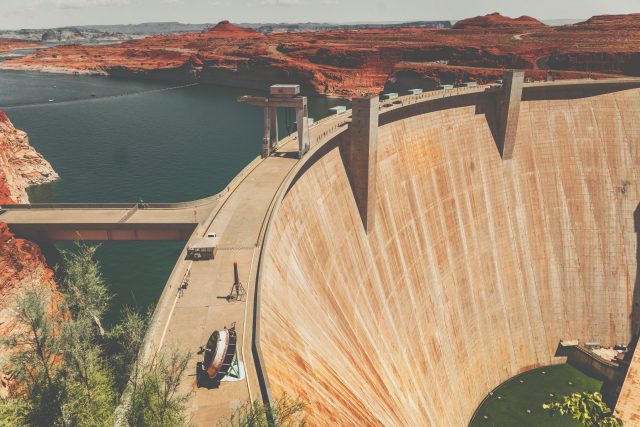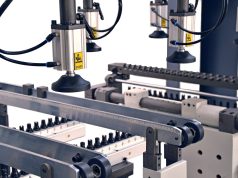I’ve worked in water infrastructure long enough to know that the most dangerous problems are often the quietest. For over 15 years, I’ve helped manage a small water district in central Utah, responsible for multiple aging dams that most people barely think about. We don’t get much fanfare, but when something goes wrong, the spotlight gets intense fast.
The dam in question was an old earthfill structure constructed in 1957. Built using equipment that would now be considered rudimentary, it had stood for decades without incident. But a few years ago, after an especially wet spring, I started to notice something that concerned me—dampness along the toe of the downstream face. It wasn’t catastrophic. It wasn’t even alarming to most. But I couldn’t shake the feeling that something wasn’t right.
We contacted an outside firm that specializes in dam safety inspections. I didn’t want a surface-level walkthrough or a checklist approach. I wanted a real investigation—one that could tell me what the eye can’t see. And I wanted someone who could explain the results in a way my team and our local board could act on.
The inspection turned out to be the smartest decision I made that year.
Their first step was historical. They gathered every drawing, survey, and set of handwritten notes they could get their hands on. Some were faded microfiche scans from the original contractors. Others came from spotty reports over the years. It was like building a biography of the dam—understanding who built it, how, with what materials, and what had changed around it.
Next came the fieldwork. The engineering team conducted a full geotechnical dam assessment—including five boreholes, installed piezometers, and slope inclinometers. These instruments were our eyes underground. I remember one of their engineers describing them as a “nervous system for the dam.” You could feel the weight of his words.
Their lab results showed something we hadn’t anticipated. The internal core of the dam had sections of highly permeable zones—likely the result of material inconsistency during the original construction. Even more concerning, the piezometric data showed unusually high pressures during routine reservoir elevations. Combined with the increased seepage I’d observed earlier, we had a serious risk of piping failure. One engineer was blunt: “You’re not in immediate danger, but you’re running out of margin.”
But the inspection didn’t stop at risk identification. They also conducted flood routing analysis using updated hydrology models. Our dam was originally designed for a 100-year flood event, but new climate data showed that a 500-year event could easily overtop the current spillway configuration. The overflow risk was real. And our emergency action plan hadn’t been updated in over a decade.
The firm put together a clear, prioritized report for our board. No jargon. No hedging. Just hard data, well visualized, with sensible options for action. They recommended a few immediate mitigation steps:
– Installing pressure relief wells at the downstream toe
– Adding an engineered drainage blanket and filter trench
– Upgrading the spillway to accommodate higher flow rates
– Modifying the upstream slope to improve hydraulic performance
Most importantly, they backed every recommendation with stability analyses, safety factors, and projected service life. We weren’t making guesses. We were making decisions rooted in measurable risk.
The board approved the plan in less than two weeks. For a government agency, that’s lightning speed. We brought the same firm back to help with design specs and construction oversight. They coordinated with the contractor to avoid delays and even helped write portions of our updated emergency response procedures.
I’ll never forget standing on the slope during construction, watching them check elevations with GPS rovers and LIDAR overlays. It felt like the dam was finally getting the attention it had always deserved.
By the end of the year, we’d completed the work. The relief wells were draining within normal parameters. The slope showed no signs of movement. And the updated spillway passed its first major storm event without any stress indicators.
What struck me most was how much this changed the way our team operated. Dam safety wasn’t just a compliance task anymore—it was a discipline. We implemented more frequent dam safety inspections, rotated monitoring responsibilities, and created internal dashboards to track real-time seepage and rainfall correlations. We even hosted a training workshop to share lessons with other rural districts nearby.
Today, the dam is in better condition than it’s been in decades. And I sleep a little easier knowing we’re not relying on luck.
That firm didn’t just inspect our structure. They helped us rebuild trust—in our data, in our decisions, and in our ability to protect our community. That’s the value of a thorough geotechnical dam assessment, especially when your infrastructure is older than most of your staff.
If you’re responsible for any dam—no matter how small, quiet, or long-standing—I can’t stress this enough: don’t wait for something to go visibly wrong. We didn’t have a failure, and that’s the story I get to tell.
And I plan to keep it that way.













